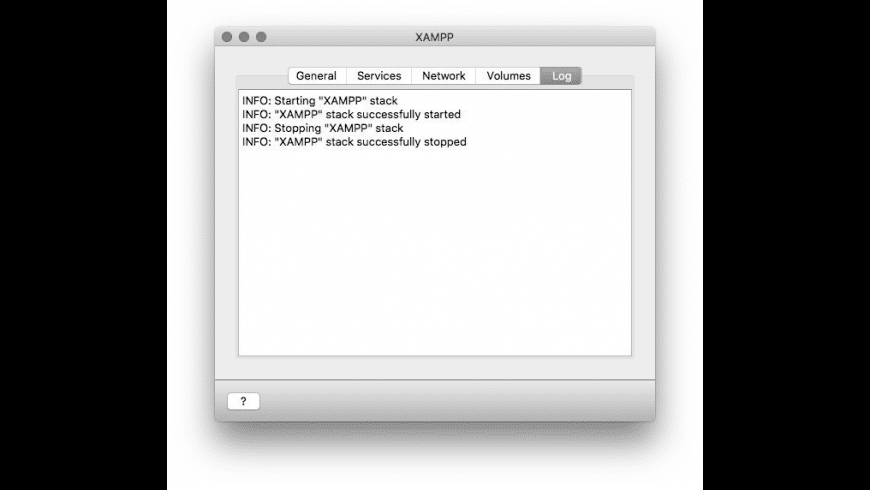
- #DOWNLOAD XAMPP FOR MAC OS X INSTALL#
- #DOWNLOAD XAMPP FOR MAC OS X DOWNLOAD#
- #DOWNLOAD XAMPP FOR MAC OS X WINDOWS#
For this tutorial, we will be using Firefox as our web browser. Let’s now look at the basic configurations required before we start using our XAMPP installation for developing PHP powered web sites.
#DOWNLOAD XAMPP FOR MAC OS X INSTALL#
Install and uninstall services such as Apache, MySQL etc.
#DOWNLOAD XAMPP FOR MAC OS X WINDOWS#
to make changesģ) This section contains useful utilities such as Netsat, windows services short cuts etc.Ĥ) This section displays status information on the modules. Open configuration files for Apache, MySQL etc. Open the administrative windows for Apache and MySQL If the button shows a green tick and you click on it, the control panel will ask you if you want to uninstall the system.Ģ) This section shows Port(s) associated with the modules. To install a service, click on the red mark. The red mark means it has not been installed as a service. A green tick means the module has been installed as a service. The diagram below shows the control panel.ġ) This section lists the installed services, modules and the process IDs PID(s).Explore the programs directory and locate Apace Friends then XAMPP as shown in the diagram below.The control panel is used to manage programs installed via XAMPP. Close Skype if you want to use XAMPP for PHP on port 80 Note,If you use SKYPE, it uses the same port. For this tutorial we will assume we are using port 80. If port 80 is taken by another web server, you can use a different port number. This directory is used to configure how PHP behaves on your server.īy default, the Apache web server runs on port 80. It contains an important file named php.ini. php – this directory contains PHP installation files.mysql – this directory contains all the information related to MySQL database engine, by default it runs on port 3306.All of our PHP codes will be placed in this directory. htdocs this is the web root directory.The following is a list of the basic directories that you are supposed to be aware of. This XAMPP Tutorial assumes that you have installed XAMPP on drive C in Windows using the steps mentioned above. On successful completion of installation, you will see following windowīefore we test our XAMPP installation, let’s first look at the basic directories that we will be working with. You will have to do this from the XAMPP control panel.PHP and

If you have not installed Apache and MySQL as services, then you have to manually start them every time that you want to use them.

Installing them as services runs both Apache and MySQL automatically in the background whenever you power up your computer.

For you to use Apache and MySQL, they are supposed to be running in the background. Services can be set to run automatically whenever the windows operating system is started. Note a service is a long-running program in windows that does not require user intervention.

You may optionally select FileZilla (FTP Client) if needed. In the next screen select Apache and MySQL. In the next screen, Change the installation path if required. The diagram below illustrates the main steps.Īfter you have deactivated the User Account Control, click on OK button on the warning message box. To do this, Select Control Panel > User Accounts > Change User Access Control settings. If you are using Windows Vista or Windows 7, make sure that you deactivate the User Account Control feature. The warning message dialog window shown below appears. There are however, a few things that we must note.Īfter you have downloaded XAMPP, run the setup. XAMPP Installation is just like installing any other windows program.
#DOWNLOAD XAMPP FOR MAC OS X DOWNLOAD#
Click here to XAMPP download for Windows:


 0 kommentar(er)
0 kommentar(er)
